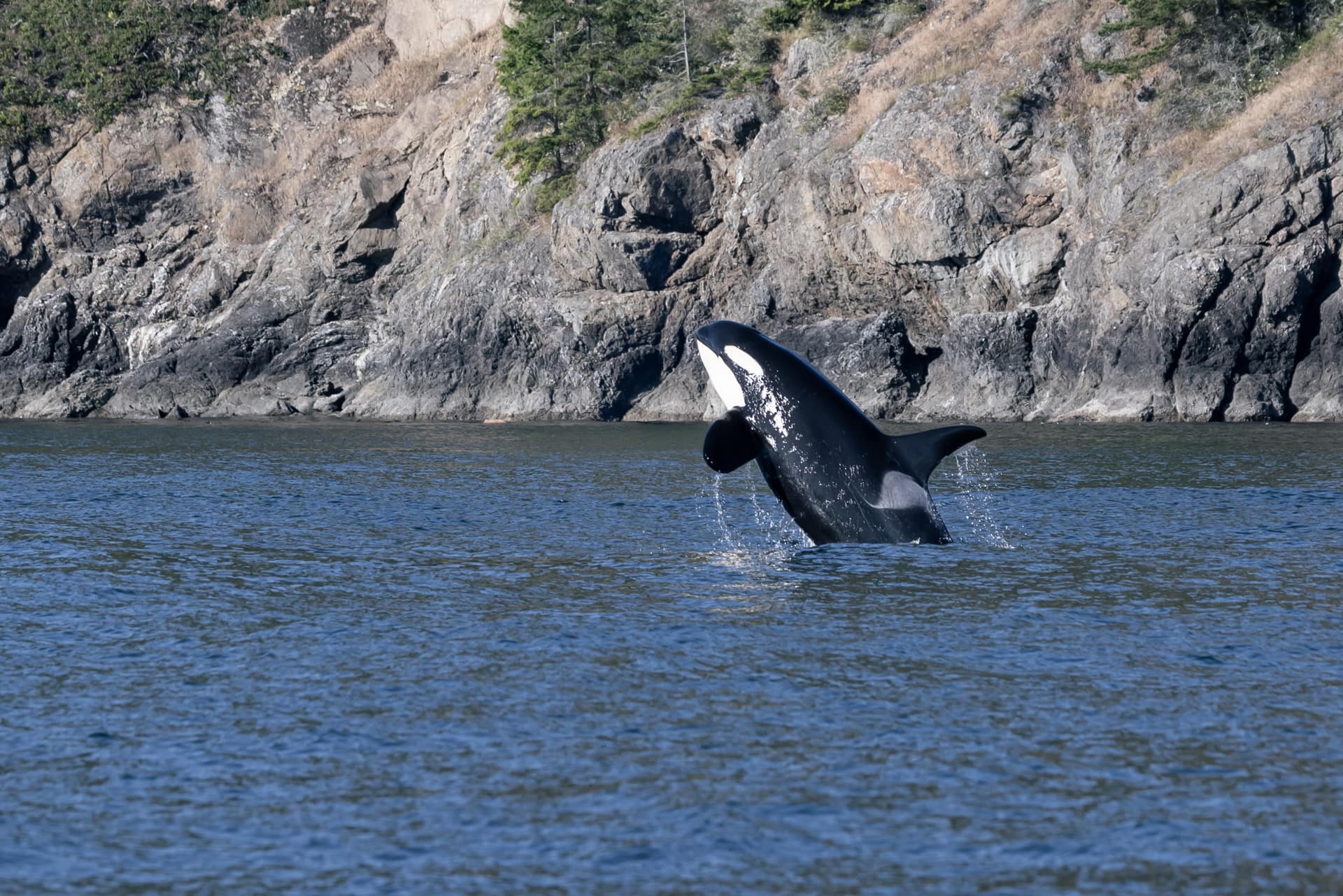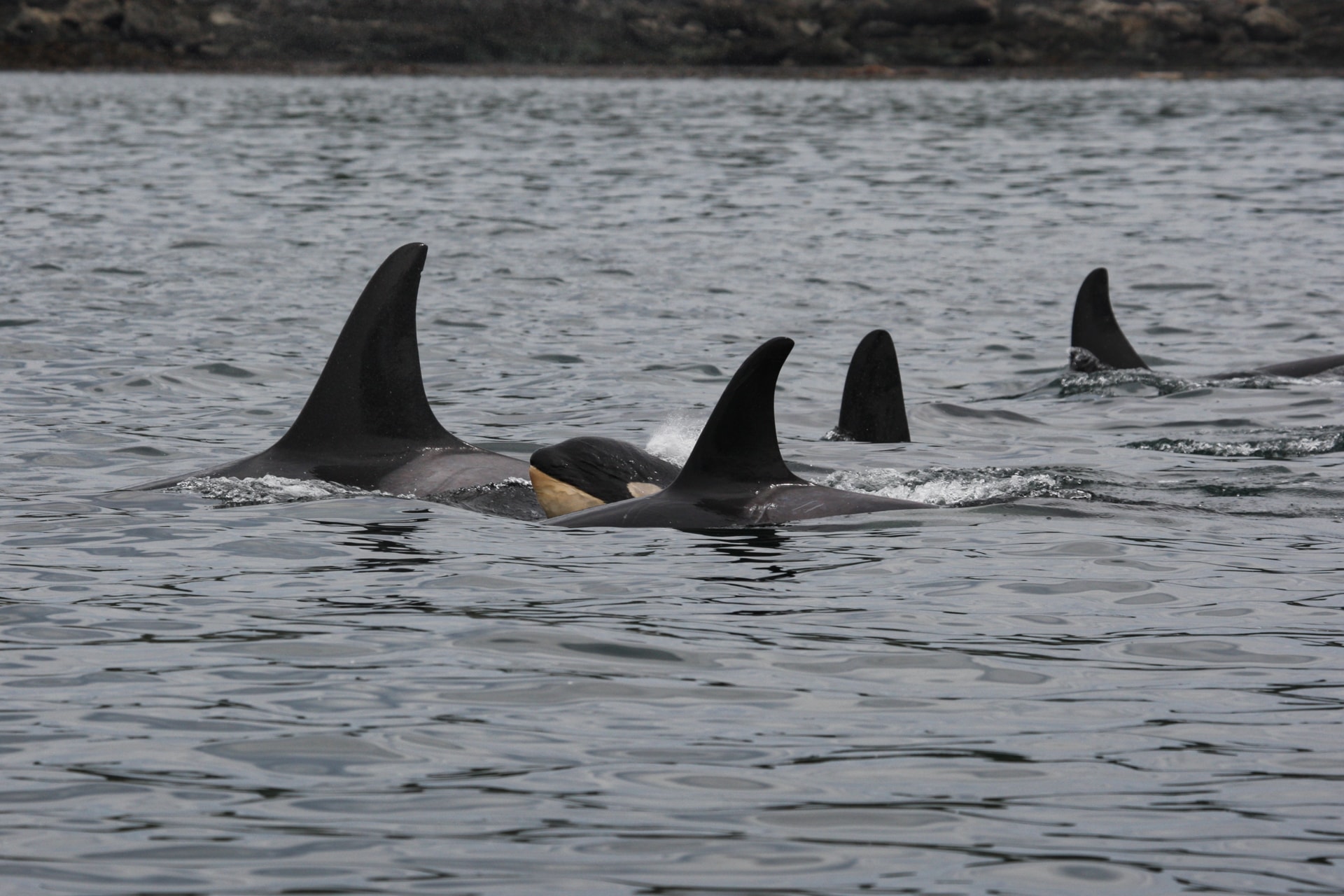
In a recent study, scientists analyzed aerial images of the Southern Resident killer whales taken between 2008 and 2019. They wanted to determine if changes in their body condition was related to the abundance of Chinook salmon. In other words, were the whales skinnier when there were fewer salmon? The study also sought to answer whether whales in the poorest body condition were the most likely to die. Spoiler alert: yes. Hence the aptly named study title: Survival of the fattest.
Identifying Body Condition
Researchers previously identified that fat loss—primarily due to insufficient food—leads to a visible depression behind a killer whale’s blow hole—referred to as a “peanut head.” After any close observation of this body condition, death often follows, and it is too late for any proactive management or intervention.
This study found that by using aerial measurements of the eyepatch—the white area behind a killer whale’s eye—it’s possible to monitor more subtle changes in fat content and body condition and therefore predict whales at risk before any close observations of peanut head.
Using this method, scientists ranked whales from class 1, “very poor” body condition, to class 5. Of the 99 whales assessed throughout the study, 25 died. Those found to be in very poor body condition, class 1, died sooner than those classified to be in better body condition.
During the study, three individuals did not have a noticeable peanut head. Yet, when evaluated by their eyepatch measurement, their body condition was identified as class 1, very poor, and they subsequently died. The authors noted, “Aerial photogrammetry provides a potentially more sensitive metric that can detect declines in condition and identify at-risk whales prior to the terminal peanut head phase that is detectable from boat-based observations.”

Researchers from the non-profit, SR3, launch a drone used to photograph and monitor body condition.
Body Condition vs. Chinook Salmon
Researchers found that the body condition of J pod seemed most influenced by the abundance of Fraser River Chinook salmon each summer. When the estimated number of salmon was above 750,000, their body condition was likely to improve or stay the same. Not surprisingly, this was much less likely in years when only half that number of salmon returned to spawn.
As L pod spends less time in the Salish Sea than J pod, their body condition did not link to Fraser River Chinook abundance but aligned more closely to Puget Sound Chinook. L pod likely hunts these salmon as they return home to spawn in Puget Sound rivers and intercept them off Vancouver Island, BC. The researchers found that when these fish numbered above 399,000, the whales’ body condition improved or was stable, but when the abundance shrank by 50%, they could not maintain their condition.
K pod did not so neatly stack up against any specific Chinook population, which suggested they “may forage on a diverse assemblage of prey.” However, as with L pod, they seemed to benefit from a higher abundance of Puget Sound Chinook, as shown by their observed body conditions.
The researchers concluded, “Our findings suggest that the three pods behave differently in terms of body condition fluctuations, which may be driven by independent foraging strategies.” The researchers proposed that the government needs to consider each pod’s needs independently, as alternative management actions may be necessary to meet each pod’s daily energy needs.
Continued below...
The researchers noted that fishery managers forecast the abundance of Chinook each season to determine how much fish is allowed to be caught by commercial and recreational fisheries. Based on the number of fish available, it would be possible to predict the impact on the whales’ body condition and make in-season adjustments to the allowable catch.
It is also possible to work even more proactively. The researchers noted, “if a large portion of the population is recorded in body condition class 1 [very poor] during September, then fishery actions could be considered to increase prey availability over the next year.”
Canada already operates a system to close key killer whale foraging areas to fisheries to ensure there’s more food available for these whales. Where is the U.S. response? Still dead in the water.





